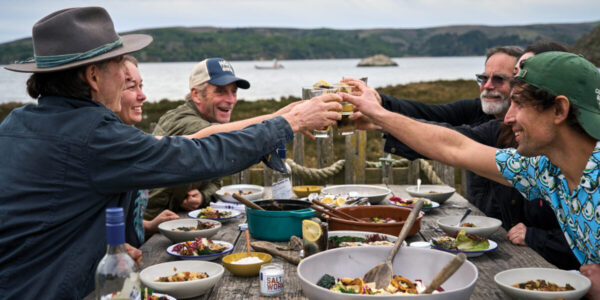
Sunset’s First Edible Gardening Book

A couple of weeks ago, San Francisco announced a tax break for those who turn their vacant lots into urban farms. Basically, if accepted into the program, the property owner’s annual dues to the city would drop significantly—as long as they agreed to upkeep it for at least five years and use the produce for the community’s betterment.
With the Bay Area being our own home, this got me thinking about the history of edible gardening at Sunset. The practice of growing food on communal land has been around for an incredibly long time. In fact, right around when this magazine was first founded in 1898. So, I dug into the archives.
I found countless shelves filled with countless books about how to grow flowers and trees. But food… that took a little more digging. And though there was nothing about community gardening specifically, the one old book I found—a 1950 guide to growing vegetables—touted a piece of advice in its introduction that rang true in thinking about one of the things that makes community gardening so great. From the Sunset Vegetable Garden Book:
“You, the home gardener, should appreciate your opportunity to accomplish results far beyond the reach of commercial growers of vegetables. You can afford to take special precautions and special risks to obtain wide variety, long-season production, and extra succulence.”
Whether you’re planting vegetables in your backyard, or on a vacant lot in the middle of the city, take a moment to appreciate the beauty of edible gardening. We all need to eat and with so many benefits, why not grow your own food?


